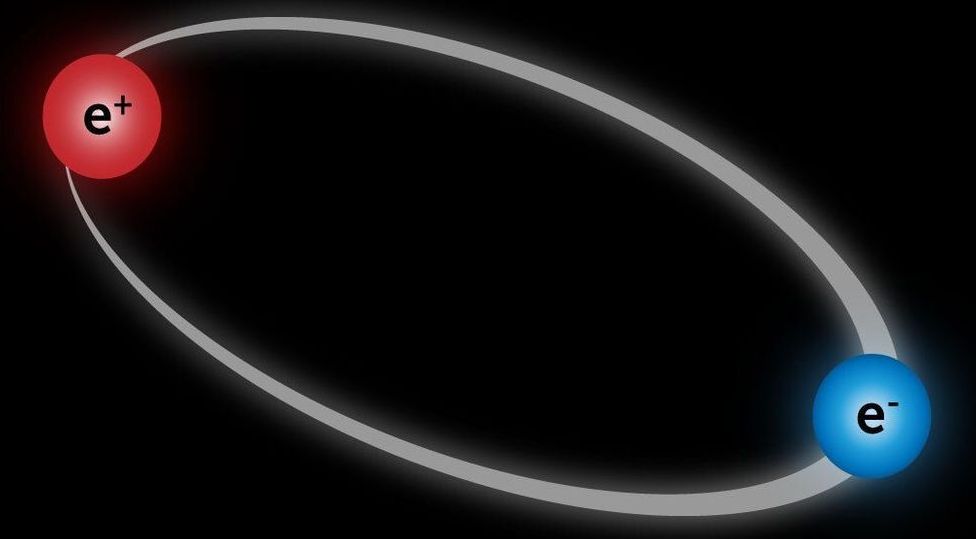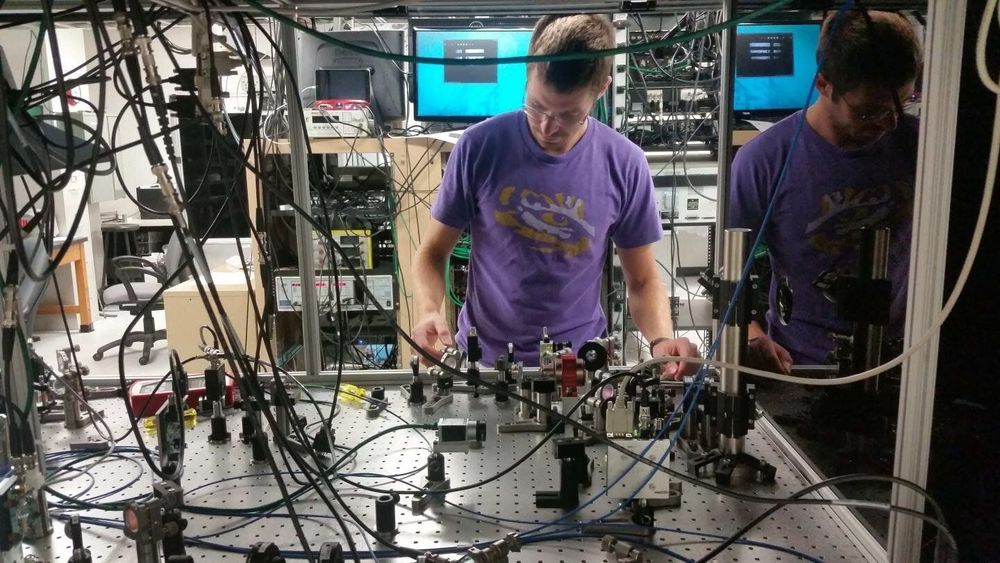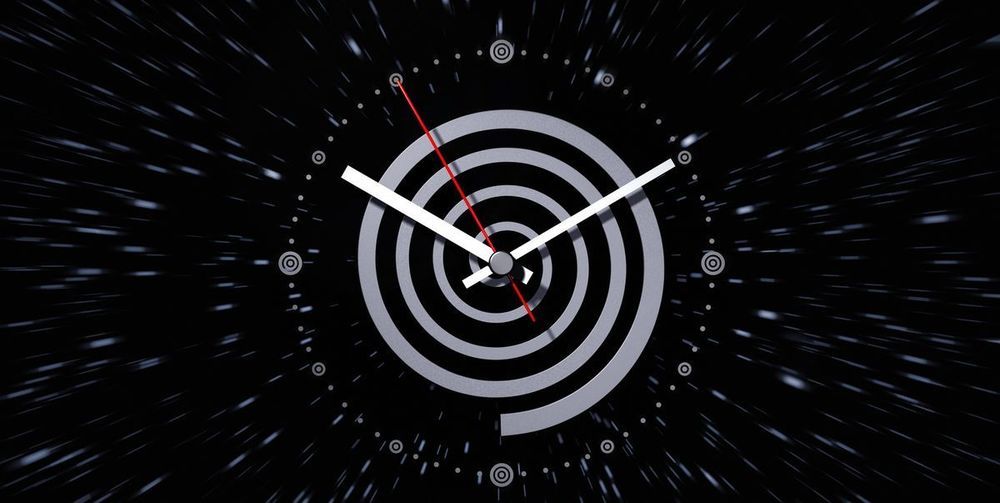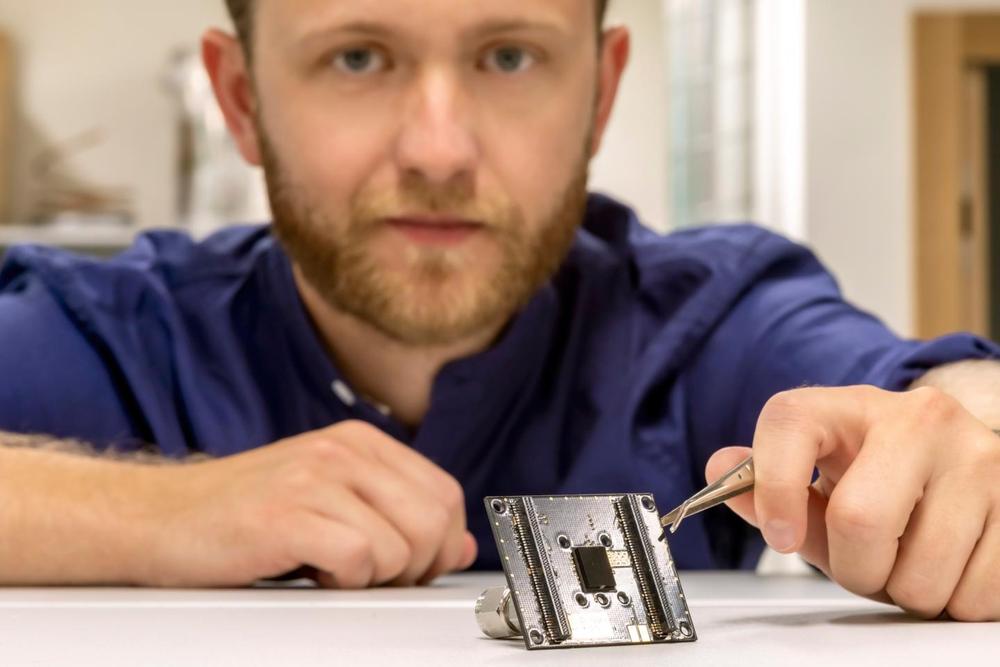O,.o.
New measurements of a weird but simple atom, one without a nucleus, suggest it may have unexpected properties. Scientists find this troubling.




Gravitational wave detectors have opened a new window to the universe by measuring the ripples in spacetime produced by colliding black holes and neutron stars, but they are ultimately limited by quantum fluctuations induced by light reflecting off of mirrors. LSU Ph.D. physics alumnus Jonathan Cripe and his team of LSU researchers have conducted a new experiment with scientists from Caltech and Thorlabs to explore a way to cancel this quantum backaction and improve detector sensitivity.
In a new paper in Physical Review X, the investigators present a method for removing quantum backaction in a simplified system using a mirror the size of a human hair and show the motion of the mirror is reduced in agreement with theoretical predictions. The research was supported by the National Science Foundation.
Despite using 40-kilogram mirrors for detecting passing gravitational waves, quantum fluctuations of light disturb the position of the mirrors when the light is reflected. As gravitational wave detectors continue to grow more sensitive with incremental upgrades, this quantum backaction will become a fundamental limit to the detectors’ sensitivity, hampering their ability to extract astrophysical information from gravitational waves.

While there’s no launch date yet, the People’s Bank of China is likely to be the first major central bank to issue a digital version of its currency, the yuan, seeking to keep up with — and control of — a rapidly digitizing economy. Trials have been held this year in a handful of cities and tests have started with some e-wallets and online apps, with the Covid-19 pandemic and need for social distancing providing a new sense of urgency. Unlike cryptocurrencies such as Bitcoin, dealing in the digital yuan won’t have any presumption of anonymity, and its value will be as stable as the physical yuan, which will be sticking around too. Behind China’s rush is a desire to manage technological change on its own terms. As one PBOC official put it, currency isn’t only an economic issue, it’s also about sovereignty.
Not all the details are out, but according to new patents registered by the PBOC and official speeches, it could work something like this: Consumers and businesses would download a digital wallet onto their mobile phone and fill it with money from their account at a commercial bank — similar to going to an ATM. They then use that money — dubbed Digital Currency Electronic Payment, or DCEP — like cash to make and receive payments directly with anyone else who also has a digital wallet. Some questions remain, including the impact on Big Tech companies such as Ant Group Co. and Tencent Holdings Ltd. that already offer payment services.

Now we can all go back to 2019.
In a new peer-reviewed paper, a senior honors undergraduate says he has mathematically proven the physical feasibility of a specific kind of time travel. The paper appears in Classical and Quantum Gravity.
🤯 You love time travel. So do we. Let’s nerd out over it together.

Air pollution involving very fine dust, such as PM2.5 particles, poses a serious threat to human health. Scientists in Austria have developed what they call the smallest particle sensor in the world, designed specifically to detect these harmful pollutants and offer a highly localized picture of air quality by being integrated into wearables and mobile devices.
According to the World Health Organization, air pollution contributes to more than four million premature deaths each year. While PM10 particles with a diameter of 10 microns or less can also make their way into their lungs, the finer PM2.5 particles are even more dangerous, as they can penetrate the lung barrier, slip into the blood stream and, through chronic exposure, cause severe forms of cardiovascular and respiratory disease, along with other health problems.
Concentrations of PM2.5 particles can be gauged through monitoring stations positioned around cities and regions, in fact the US Environmental Protection Agency uses a nationwide network of these stations to track air quality trends. But scientists from Austria’s Graz University of Technology (TU Graz) have been working on a more cost-effective, compact and versatile solution that can alert individual users of dangerous conditions in real time.
Rewriting the rules in GAN: Copy & paste features contextually.
GAN architecture has been the standard for generating content through AI, but can it actually invent new content outside what’s available in the training dataset? Or it’s just imitating the training data and mixing the features in new ways?
Amazon’s smart home webcam can fly around to guard your house.

In recent years, researchers have been developing machine learning algorithms for an increasingly wide range of purposes. This includes algorithms that can be applied in healthcare settings, for instance helping clinicians to diagnose specific diseases or neuropsychiatric disorders or monitor the health of patients over time.
Researchers at Massachusetts Institute of Technology (MIT) and Massachusetts General Hospital have recently carried out a study investigating the possibility of using deep reinforcement learning to control the levels of unconsciousness of patients who require anesthesia for a medical procedure. Their paper, set to be published in the proceedings of the 2020 International Conference on Artificial Intelligence in Medicine, was voted the best paper presented at the conference.
“Our lab has made significant progress in understanding how anesthetic medications affect neural activity and now has a multidisciplinary team studying how to accurately determine anesthetic doses from neural recordings,” Gabriel Schamberg, one of the researchers who carried out the study, told TechXplore. “In our recent study, we trained a neural network using the cross-entropy method, by repeatedly letting it run on simulated patients and encouraging actions that led to good outcomes.”